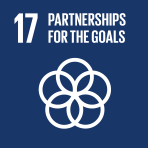 Partnerships for the Goals
Partnerships for the Goals
Government Electronic and Mobile Services Maturity Index (GEMS 2024)
The Government Electronic and Mobile Services (GEMS) Maturity Index aims to measure the maturity of government services delivered through web portals and mobile applications in Arab countries. It is a tool that enables decision makers and policymakers to monitor the progress of digital transformation programmes, with the aim to highlight certain dimensions not reflected in many international indicators, particularly service development, usage, user satisfaction and government efforts for public outreach. To this end, 100 government services have been identified for countries to deliver electronically to individuals and businesses. These services have been selected based on a life-cycle principle, ensuring they address the needs of individuals throughout various stages of their lives, and the needs of businesses from establishment to closure. The services are updated annually to reflect these evolving needs. This report presents the results of the GEMS maturity index for 2024 at both the regional and national levels. It also proposes recommendations that can be adopted to strengthen the digital transformation of government services nationally and ensure their availability through digital channels.
Acknowledgements
The Economic and Social Commission for Western Asia (ESCWA) would like to thank the following national coordinators from member States for their efforts in coordinating, collecting data, communicating with national institutions to fill out the various forms of the Government Electronic and Mobile Services Maturity Index (GEMS) and making valuable observations: Mr. Laraj Zerrouki (Ministry of Post and Telecommunications, Algeria), Ms. Fatima Musaiger (Information and eGovernment Authority, Bahrain), Mr. Abbas Abdul Kadhim (Ministry of Planning, Iraq), Ms. Sura Al-Khatib (Ministry of Digital Economy and Entrepreneurship, Jordan), Mr. Abdul Karim Al-Fowzan (Central Agency for Information Technology, Kuwait), Mr. Mohamed Salem Al-Qambari (General Information Authority, Libya), Mr. Mohamed Ould Bob (Ministry of Digital Transformation and Modernization of the Administration, Mauritania), Ms. Asma Afifi and Ms. Salma Khales (Agency of Digital Development, Morocco), Ms. Sumaya Al-Kindi and Ms. Omaima Al-Khanbashi (Ministry of Transport, Communications and Information Technology, Oman), Mr. Fadi Morjana (Ministry of Telecommunications and Digital Economy, the State of Palestine), Ms. Haya Al-Ansari and Ms. Noor Al-Kuwari (Ministry of Information and Communications Technology, Qatar), Mr. Majid Abdulla Al-Haidar (Digital Government Authority, Saudi Arabia), Mr. Zakaria Ismail and Mr. Mohamed Shafi (Ministry of Communications and Technology, Somalia), Ms. Maysoon Yassin (Ministry of Communications and Information Technology, the Syrian Arab Republic), Mr. Riad Ouslati (eGovernment Unit – Government Presidency, Tunisia), Mr. Ahmad Al-Aleeli and Mr. Abdel-Rahman Nazir (Telecommunications and Digital Government Regulatory Authority, the United Arab Emirates), and Mr. Raed Saeed (Ministry of Telecommunications and Information Technology, Yemen).
Introduction
Digital government transformation is a broad and constantly evolving concept.
GEMS conceptual framework
GEMS aims to measure the maturity of government services provided through portals and mobile applications in Arab countries.
GEMS results at the national level
The following section presents the detailed results for each member State that provided data for the GEMS 2024, and offers country-specific suggestions based on these results.
Breaking the Cycle: Addressing Inequalities in Child Survival to Promote Inclusive Social Development
Leaving No One Behind (LNOB): A Pathway that Delivers
From Non-tariff Measures Data to Impact: Guidelines for the Analytical Pathway from Non-tariff Measures Inventory to Trade Impact Assessment
Non-tariff measures (NTMs) play a crucial role in shaping international trade. While tariffs remain important instruments of trade policy, NTMs increasingly play a prominent role in determining market access and trade costs. According to UNCTAD, NTMs tend to have a significantly greater impact on trade costs than tariffs. Thus, NTMs may - even unintentionally - act as barriers to trade. Moreover, they often serve legitimate public policy objectives, such as protecting health, safety and the environment. Unlike tariffs, which are relatively straightforward to quantify—typically expressed as a percentage of the product’s value or in monetary terms—NTMs are inherently more complex. They encompass a wide range of regulatory measures, including product requirements, health and safety regulations, and import quotas, whose trade effects are not easily measurable. Their administration is often fragmented across multiple government agencies, further complicating transparency and analysis. Tariffs are more transparent, as countries generally publish and communicate their tariff schedules to the public and World Trade Organization. As NTMs continue to grow in importance, understanding their nature, incidence, scope, implementation, and impact on trade is essential for policymakers, researchers, and stakeholders engaged in global trade. This guideline presents possible analytical approaches used to support policymakers in understanding and designing regulations that minimize costs to trading businesses while maintaining important public policy objectives. This document focuses on methodologies that can be used to assess the impact of NTMs on trade and development.
Acknowledgements
This document was prepared, under the overall guidance of Ralf Peters of the Division on International Trade and Commodities of UNCTAD, by Denise Penello Rial, with non-tariff measures and trade data provided by Fabien Dumesnil and Rado Razafinombana.
From NTMs data to trade impact analysis: a logical sequence
The TRAINS database enables transparency in how NTMs are used across countries, sectors and time. However, to use these complex data effectively for policy formulation and trade impact analysis, it is important to understand how to interpret them correctly and avoid common pitfalls.
Conclusion: Combining descriptive and impact analysis
NTMs have a large impact on trade costs and due to their bilaterally divergent de facto impact on market access conditions, they have no most-favored nation nature but often disproportionately negatively affect smaller enterprises, vulnerable groups and poorer economies (UNCTAD, 2022).
Introduction
Non-tariff measures (NTMs) play a crucial role in shaping international trade. While tariffs remain important instruments of trade policy, NTMs increasingly play a prominent role in determining market access and trade costs.
